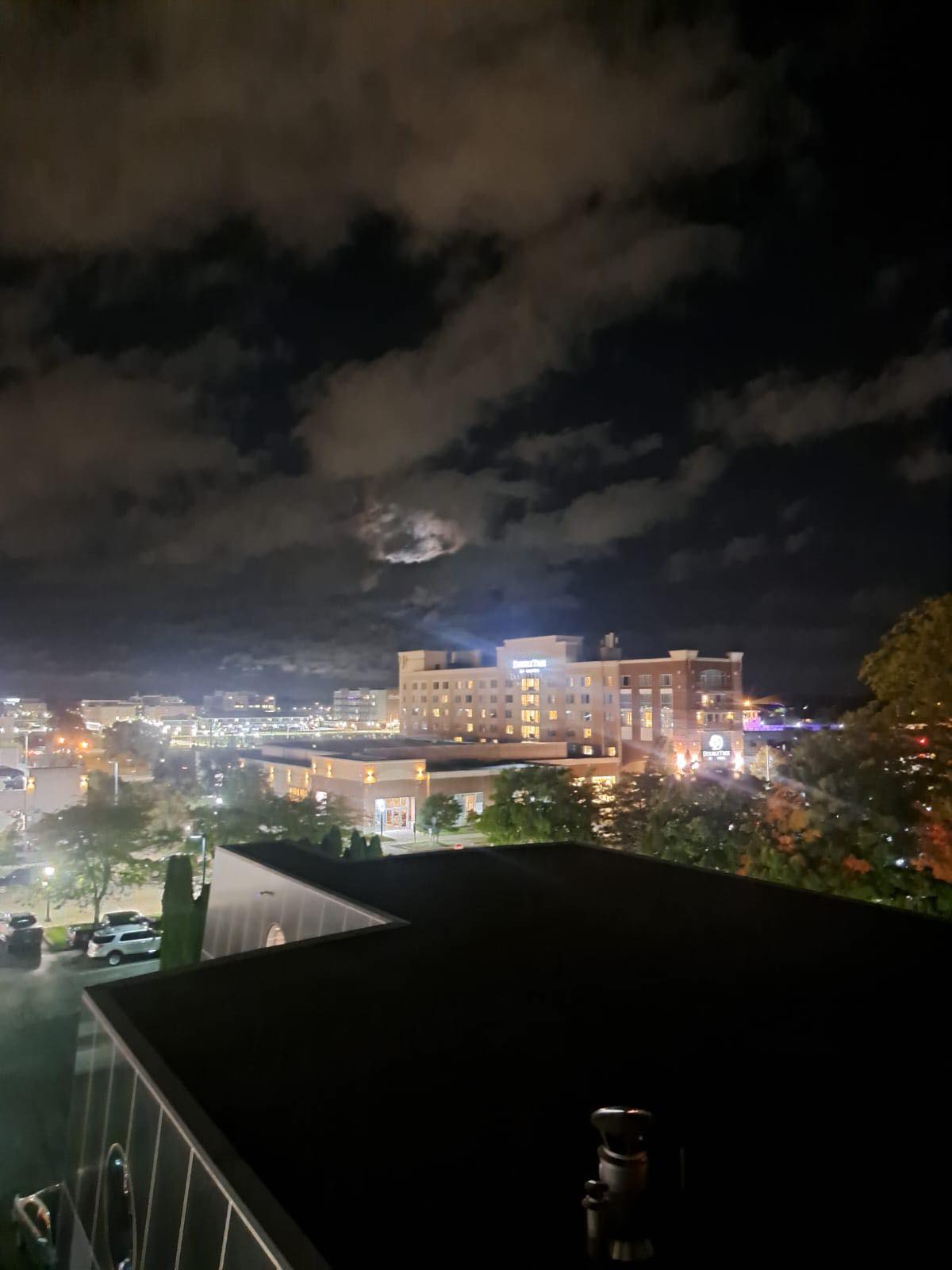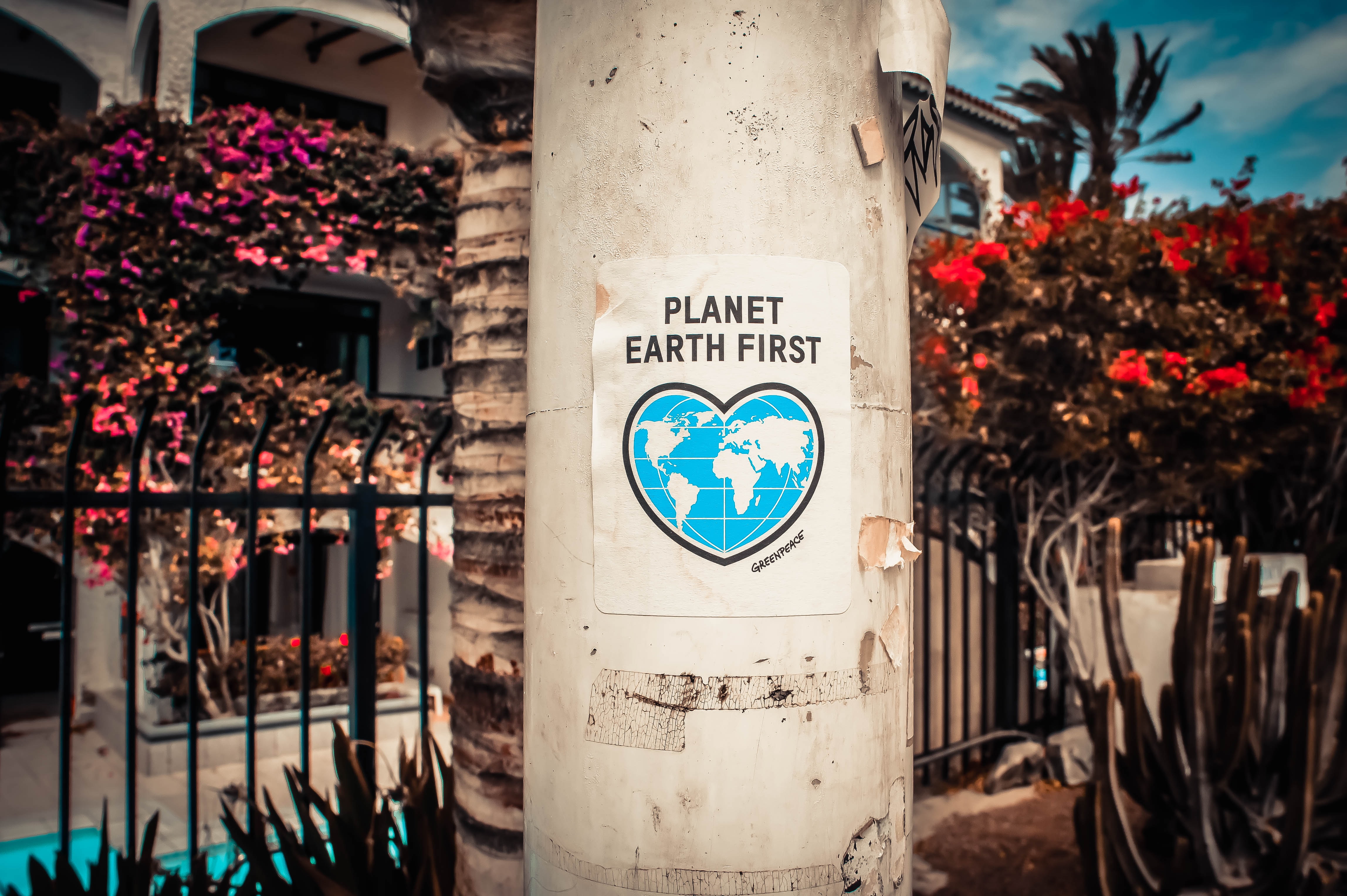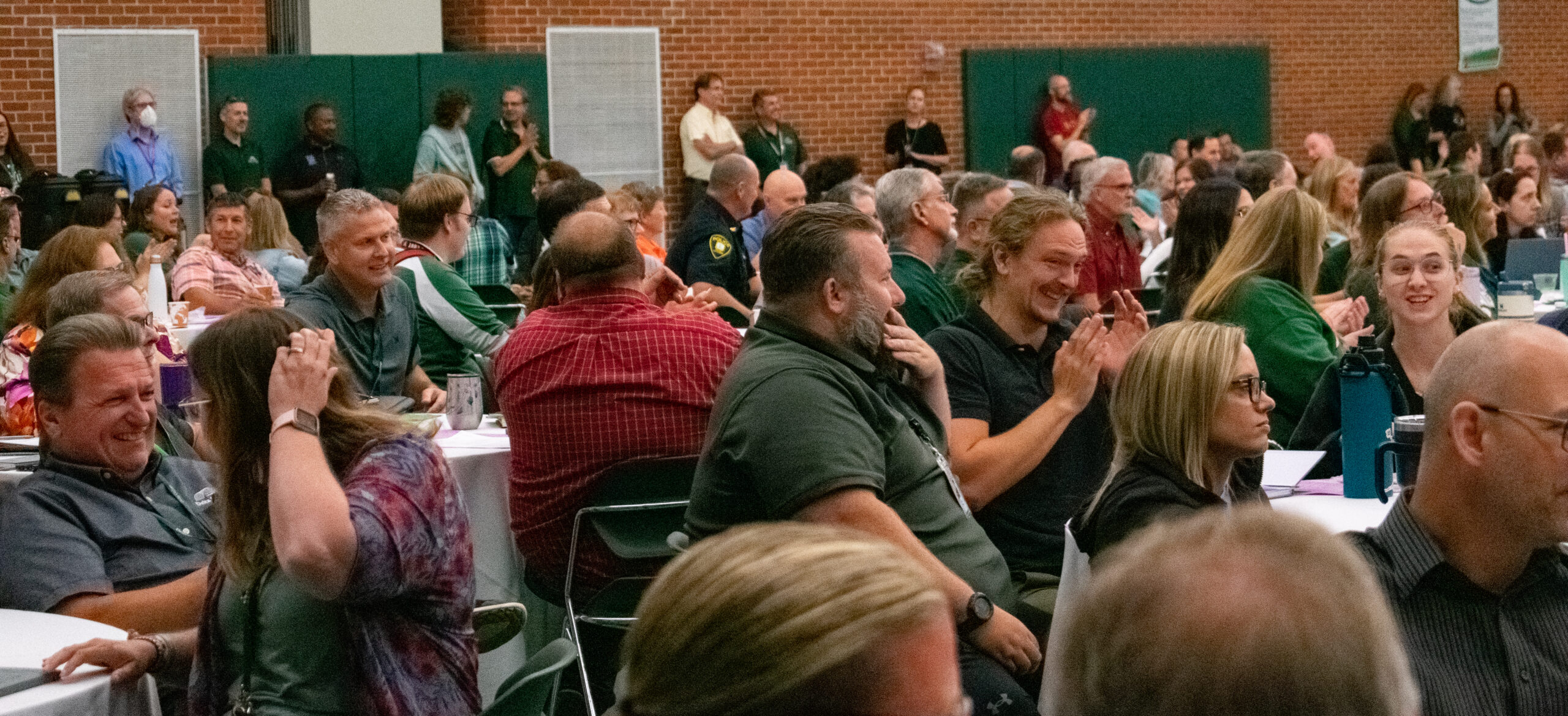By Vanessa Selle

Many distinctive features and phases of the moon are displayed on the Dome 360 projector at the Delta College Planetarium, Oct. 1, 2022; Photo credit Vanessa Selle.
BAY CITY – Community members were invited to the Delta College Planetarium for International Observe the Moon Night on Oct. 1 at 8:30 p.m. Mike Murray is the planetarium manager and an astronomer. He gave a presentation about the moon and how to view its features, followed by a viewing opportunity on the Observatory Deck.
According to Murray, it was a crescent moon at the time of the event, which is one of the best times to observe the moon.
The event was well attended. Most of the crowd included parents with children. It began in the Dome 360 room, where Murray showed tips on how to view the moon, some common features you may see on the moon, and how to read a few basic moon and star charts.
Along with practical tips for observing the night sky, Murray educated the audience about the history of moon formation and moon landings, such as the locations of all the Apollo missions, some pictures of the sites, and how they look now.
Common terms such as “sucker-hole,” which happens when clouds obscure the view of the moon or stars, and “terminator,” the day and night line that shows on most phases of the moon, were used. The terminator makes the crescent moon one of the best phases to see moonscapes because it defines features along that line, making them more visible. The satellite that provides astronomers with most of the current information about the moon was also mentioned, called the Lunar Reconnaissance Orbit, launched 13 years ago by NASA.
Murray also wanted people to know about future events at the planetarium.
He made it clear that fancy telescopes were not needed to view the moon and its features; all that’s needed is a curious person and a pair of binoculars. Murray encouraged observers to look ahead at what phase the moon would be in and look at moon maps to find specific things to look for.
His favorite feature of the moon is the Apennine Mountain Range, found on the northern part of the moon’s near side and named after the mountain range in Italy. This range, which is easy to see with binoculars, is also the landing site of Apollo 15.

After the presentation in the Dome, the attendees were offered the chance to go onto the planetarium’s roof to look through the telescopes. The moon was covered mainly by clouds, giving the crowd their “suckerhole experience.” Murray directed a telescope toward Jupiter, which shows up in the western sky this time of year. Viewers were able to see the planet and three of its larger moons.

Attendee William Woulukka enjoyed the event and expressed interest in future events, such as the lunar eclipse event. He liked that Murray pointed out some easily seen features of the moon, and even the names of the most famous places on the moon, like the Sea of Tranquility, where Neil Armstrong landed, and Tycho, the most prominent crater on the moon. He said that he learned more than he expected to, but it was all presented in an easily understandable and enjoyable way.
A table by the door held more information about Planetarium events, a star chart, and a Moon Observation Journal for eventgoers to take with them. More information can be found on the Delta College Planetarium website.



